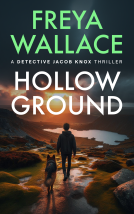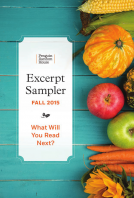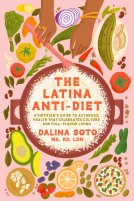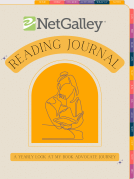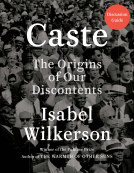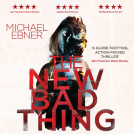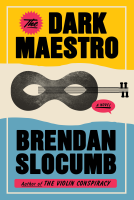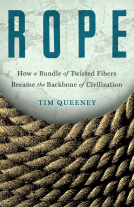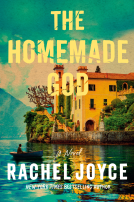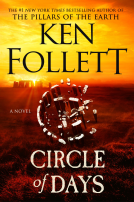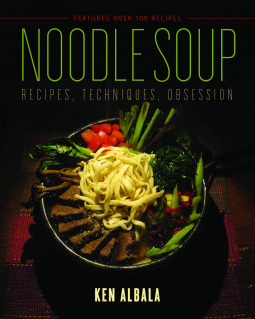
Noodle Soup
Recipes, Techniques, Obsession
by Ken Albala
This title was previously available on NetGalley and is now archived.
Send NetGalley books directly to your Kindle or Kindle app
1
To read on a Kindle or Kindle app, please add kindle@netgalley.com as an approved email address to receive files in your Amazon account. Click here for step-by-step instructions.
2
Also find your Kindle email address within your Amazon account, and enter it here.
Pub Date Jan 03 2018 | Archive Date Feb 21 2018
Talking about this book? Use #NoodleSoup #NetGalley. More hashtag tips!
Description
Advance Praise
"Ken Albala has spent years tossing ideas—and pretty much everything else—into a pot of water with homemade noodles rich in new flavors, textures, and colors. Now we all get to share the results. These clever, doable, delicious recipes thrill the palate and warm the soul. Let the choir sing out: soup's on!"--Nathalie Dupree, PBS host and author of Mastering the Art of Southern Cooking
"Ken meanders from classic Italian passatelli to cuckoo Cheetos Noodles with touchdowns in Malaysia, Japan, and many non-noodle-dense cultures along the way. He wrangles a slippery subject with his trademark academic precision, but delivers well-researched recipes in a colloquial, lively tone that has me slurping up page after page."--Linda Miller Nicholson, saltyseattle.com
"Ken Albala is a widely traveled food historian who knows his noodles, and a home cook who became obsessed with noodle soups. His wonderfully offbeat treatise brims over with history, culture, recipes from near and far, inventions both brilliant and crazy, and the sheer fun of playing with foods and traditions."--Harold McGee, author of On Food and Cooking: The Science and Lore of the Kitchen
Available Editions
| EDITION | Other Format |
| ISBN | 9780252083181 |
| PRICE | $21.95 (USD) |
| PAGES | 192 |
Links
Featured Reviews
 Critter B, Librarian
Critter B, Librarian
Noodle Soup is my go-to comfort food. Udon is my favorite. I was very excited to see this cookbook.
For a cookbook, there is a lot of time spent on exploring the worldwide history of noodles. Recipes are from North Dakota , Tibet, Peru, Morocco, Italy, Singapore, basically everywhere. Techniques are exhaustively explained. Photographs are provided. This is a Noodle Soup Textbook. Only, replete with humor.
I liked the photos and explanation of adding dehydrated vegetables to noodle dough. I loved the advice about cricket flour noodles. I loved that there is a recipe for Uyghur Laghman. This is definitely not a vegetarian cookbook, but there are some meatless recipes.
This is a very funny, encyclopedic, practical, well written book. I loved it! Would make a great gift for food historians, cooks, and foodies.
 Reviewer 446033
Reviewer 446033
The book has delicious recipes that are easy to prepare. However, this book is not an ordinary cook book. This book contains history and cultural background explained and applied to the recipes which is amazing!
 Susan D, Reviewer
Susan D, Reviewer
With colder temperatures, fall produce, and the need for delicious food for daily and holiday eating, I delved into 'Noodle Soup'. This is a wide ranging book, with recipes, techniques and commentary. I tested several of the recipes and found them to be a wonderful addition to my range of home-cooked foods. I really learned so much about noodles, ramen, flavor, techniques and how to make the best darned noodle soup there is. This book gave me confidence that I could not just make soup or noodles, but that I could make the best soup and noodles that my family had ever tasted. 5 Yums from me!
When I saw the title Noodle Soup, I snapped up this cook book in a hot second. I love to cook and my family loves noodles. What also caught my attention was the mention of crickets in the table of contents. My son is doing a marketing presentation on crickets as a sustainable food source and this caught my eye.
It’s my belief that a good stock is the secret to a great soup. The section on stocks is detailed and described in an easy and accessible way. You don’t have 3 stalks of celery? Don’t worry about it, use what you have. There are a few easy techniques that I wasn’t familiar with and will add when cooking stocks from now on.
Fresh vs dried. It’s all covered and to make your own is explained in easy detailed instructions. I especially liked the Global Classics section. Featured are many different countries and how they incorporate noodles. Mr. Albala is passionate about noodles and it shows in his experimentation with alcohol infused noodles, script, colors, and many other interesting ideas.
As much as I like to cook, I like table ware. There is a section on utensils. Did you know different countries use a unique style of chopsticks? Very interesting. Bowls make a difference too. Etiquette is also covered on how to use those chopsticks with a spoon. Tips on making me feel less awkward in a Korean restaurant is a bonus.
I will use this cook book as a reference and an addition to my collection.
Thank you Ken Albala, Net Galley for the opportunity to read an advanced copy.
 Jennifer C, Reviewer
Jennifer C, Reviewer
Noodle Soup is literally filled with everything you can imagine related to broths, noodle-based soups, and more. Starting with the history of noodles, it also has an in depth discussion of different stocks/broths. The tools you need to prepare different soups are described in detail as well. Next, different types of noodles are reviewed, and I definitely found some new varieties here. How fun were the unusual ingredients! Reconstructions of soups were explored thoroughly, and lastly, Inventions of new soup ideas were presented. As a soup lover, this book is going to be a great resource for fresh ideas. Homemade spaetzle will be one of the first recipes I try! Yum!
Thank you to Ken Albala, University of Illinois Press, and Netgalley, for the opportunity to read and review this exceptional cookbook.
 Lili F, Reviewer
Lili F, Reviewer
I was expecting a bog-standard cookbook, what I got was a love letter to noodles from around the world! I greatly enjoyed the history and variety of recipes. I was not the biggest fan of the actual recipes though, it reminded me a lot of asking my mom how to cook something she has made so many times that she can just give a rough description and I am left figuring it out. When I am reading a cookbook I want very detailed instructions, otherwise I will just go to the kitchen and wing it on my own. While the conversational tone was enjoyable to read in the rest of the book, I found myself wishing for more details.
I did really enjoy the sections on noodles, broths, and garnishes. I was happy reading all of it and honestly would not mind adding the book to my collection just based on that.
 Reviewer 378331
Reviewer 378331
First of all, this is not a generic "Noodle recipes" book. This book is for real fans of noodles; the ones that eat them with pleasure, dare to try new variations and dream about making their own noodles at home. If your mouth is already watering while thinking "mmm...noodles", wait until you hear what's on this book.
We need to define what is considered noodle soup and what isn't. Not so long ago I read a post debating about why a bowl of cereal cant be considered soup, so knowing the rules of the game make it easier to break them later on, and this book will keep enticing you to break and bend the rules of what we think of as "noodle soup". The first chapters of this book take care of that; what is considered a noodle, different ingredients and varieties, historical and cultural background, old techniques of noodle soup making from different countries and different centuries, right bowls and other utensils for a good eating experience and kitchen tools for making noodles. Everything explained in great detail and very relevant if we are to experiment with new recipes or ways of eating noodle soups.
Noodles + broths + garnishes + classics:
With that amount of detail on just the historical background, you would be right to expect a lot more in-depth information to come ahead, and there is. A lot of recipes for making all kinds of stocks, gathered from around the world, meat or vegetable stocks. Followed by even more recipes for making all kinds of noodles in all shapes, sizes, textures and even ingredients that I never knew existed. Grain or starch noodles, fermented, smoked, chilled, pulled, alkaline, batter, multicolored, all the way to more exotic versions like flamin' hot cheetos noodle soup or acorn noodles. The garnishes section is not as lengthy but covers well beyond what you need to know in order to make the right choices between all the possible combinations and types of ingredients suitable for your specific noodle soup.
However, if you are not feeling adventurous yet, or simply want a taste of noodles from other countries, there is a section full of classic dishes from places around the world; Japan's Hakata ramen, Indonesia's Cendol, Slovakia's pulled noodles, Korea's Dongchimi-guksu, Switzerland's Chard noodle soup, New Orlean's Yaka-mein among many others from all around the globe.
I bet you weren't expecting this!:
The last two sections of the book is where creativity explodes like multicolored fireworks. First, we have original recipes created by Ken Albala. Some soups sound delicious (and clever) like his onion noodle soup, which is like a traditional onion soup with a noodle twist. Others I wont be trying any time soon, like his French fry noodle soup, just because I don't like the taste of French fries. From here on, the book is full of ideas to inspire you and guide you to explore and stretch the boundaries of Noodleland. Candy noodles, calligraphy on noodles, microwaved noodles, marbleized noodles... all kinds of crazy ideas for you to experiment with. Each comes with commentary and instructions without specific measurements, even less than in the rest of the book. I feel like his idea of Noodle soup cocktails will be a hit in the future; it looks good, sounds good and has alcohol, so, I'm pretty sure it tastes good as well.
If you are planing to give this book as a gift to someone who enjoys ramen, pho or other popular noodle soup, keep it mind that it might not suit those who only want to try basic recipes and would rather have a well detailed list of ingredients followed by step by step instructions, lots of pictures and kitchen tips, in other words, another average cookbook. This book is more of an exploration on the endless possibilities of cooking with noodles and turning them into a soup, an invitation to experiment with ingredients. A reference book with some recipes along the way and explanations on techniques for you to try and tweak to your own preferences. While you can certainly follow along the instructions, most of them require some trial and error and decide on measurements on your own, so for the inexperienced cook this can be very daunting. On the other hand, people like me who don't seem to be able to stick to recipes and love experimenting in the kitchen, will find this book just right up their alley. Even more so if they love soups and noodles! but who doesn't? so I will assume that is a given. I got my eArc via NetGalley
I got so many "Tampopo" vibes while reading this book I had to go to the kitchen to cook noodle soup. ;-)
This book has a lot of background material and recipes for all tastes, from people like me who like to stick more to the world classics to the ones who like to experiment in the kitchen and innovate their recipes.
For the sake of SEO and other out-of-the context considerations, I will add the label 'cookbook' to this book. In fact though, it is more than a simple collection of recipes, but an anthopological journey of noodles, their meanings and local translations.
'An epistemology of the noodle soup' - with a continual presence starting from the Bronze Age on the territory on what is today's China - may include the answer to the question: 'How do we know what counts as noodle soup?'. But happily, this book touches upon the limits of other issues associated with them. For instance, the bowl soup, to whose beauty a couple of paragraphs are dedicated. Obviously, 'not every bowl is intended for noodle soup', but there are more subtle observations as well: 'If you want to see through a clear soup, make sure it's a white bowl, either porcelain or made with a white slip'. The author, which for 2 and half years practiced noodle soups every morning for at least 15 minutes, makes bowls too, so the experience talks here too, it seems. Last but not least, keep in mind that chopsticks are 'crucial in constructing the entire noodle soup aesthetic'. In fact, every stage of preparing the noodles and the bowls as such are part of a larger existential exercise. Did you ever think that 'cutting soba by hand is a meditative practice'?
'There is no denying that dried pasta is just about the most convenient food product imaginable; it's easy to cook, virtually indestructible and can be kept in your cabinet just for those occasions when you don't have a lot of time to fuss'. However, if you read this book seriously - with side notes and specific adnotations - you will realize that you can do your own noodles, but in fact it is not as easy as it sounds. It requires not only practice, but a rich imagination. Otherwise, how someone can figure out how to prepare a reconstructed - noodle soup - dish of a Reuben sandwich, or Baba ganoush?
As for me, I would rather keep reading this book, couple of minutes the day, for getting the right practices as much as my cooking abilities allows, in terms of matching stocks, types of noodles and, why not, bowls too.
This is absolutely the quintesential book of noodles; the everything you always wanted to know about every kind of noodle ever made and then some. I found this to be the most fascinating book, with the most wonderful and delicious recipes to make noodles and noodle soup. Being my most favorite food in the world, noodles remain at the top! A wonderfully well written book and an absolute read for everyone who likes to make that comforting noodle soup. A must read! Thank you to Netgalley and the University of Illinois Press for the perusal...this is a treasure!
 Reviewer 254829
Reviewer 254829
This is a compendium of one persons quest for noodle soup. It is not a recipe book. You know those people who have, like, a hundred recipe books and can sit for an evening reading them? Well, this is for those people - everything that could possibly go in to noodle soup is discussed in passionate detail. This book will provoke and inspire cooks for noodle soup, and also cause people to think about ingredients for other recipes in a whole load of other ways. A great gift for a passionate cook.
 Reviewer 449315
Reviewer 449315
This book is about every facet of Noodle Soup. It starts with the author talking about the perfect vessels and utensils to use when eating noodle soup, and a short history on the subject. The author also goes into all the different tools you will need to make your noodles, and some helpful tips for using different things. (So there is another use for that coffee grinder!)
There are recipes for any type of stock you (or at least I) could think of. I love that this book is about spending the time and making your noodles from scratch, and really getting into the essence of noodle soup. That being said I love that the author does give some praise to the almighty dried pasta, and states that it is suitable for all the recipes in the book.
Now for the good stuff!! The is just so much information! It would be impossible to go into too much detail. Some of my favorite things were the idea of dehydrating favorite salad ingredients and making a beautiful, colorful pasta. I can't wait to have some of this sitting outside on a summer evening! There was even a noodle soup recipe that makes noodles out of one of my all time favorite snack foods (SPOILER: Flamin' Hot Cheetos!) The garnishes and seasonings are endless. This book describes some of the typical garnishes/seasonings. How different cultures use them. What is a Tare? Do I want to use it in different soups? There really is just so much. This book has recipes for noodle soup that span the globe. This is NOT a ramen cookbook. I tried the Lasagna Noodle Soup (and for time purposes, I used dry pasta). The instructions were easy to follow and the result was delicious. I liked that there were variations and additions offered, so everyone can really make it their own.
I found this title to be very informative, and full of beautiful photos. Who knew that a humble noodle soup could really be so complex. This is a great title to give you the information and inspiration to start!
Thanks NetGalley for this opportunity to read and review this book.
 Jeanette B, Media/Journalist
Jeanette B, Media/Journalist
In Noodle Soup: Recipes, Techniques, Obsession Ken Albala distills thousands of years of noodle soup-making from around the world into one passionate and well-informed volume. Which bowl will you use and why? Which stock, meat, vegetables, spices, herbs will you add? More importantly, which noodles? Why not make your own? Wheat, beans, rice, amaranth, chestnuts, salmon - even potato chips are all fair game. There's an interesting mix of history, cultural differences and ingredient information here, all of it rounded off by extensive personal experience and experimentation, and, of course, recipes. The final chapters are a free-for-all of delicious creativity. I loved this book. Albala's writing is comprehensive with a down-to-basics style that made me confident that I can conjure up a soup that will make me 'fall off my chair', too. So, we'll see. I'm off to fill my favorite soup bowl.
Disclosure: I received a digital ARC of this book in exchange for honest feedback (but, I'm ordering this book!)
 Littlemiss H, Reviewer
Littlemiss H, Reviewer
Wow! Intense love affair with noodle soup in the form of a cookbook. Fascinating. Love food? Love history? Love travel? Read this - it's a culinary adventure!
 Sharon B, Reviewer
Sharon B, Reviewer
University of Illinois Press and NetGalley provided me with an electronic copy of Noodle Soup. I was under no obligation to review this book and my opinion was freely given.
Noodle Soup has a great introduction, explaining about the recipes in this book and why they were crafted as they are. A good section on Utensils is next, which may seem like a waste of time, but the choice of bowls especially makes a difference in how the soup cools or is presented. Etiquette and tradition is strong in Asian culture, so the author takes the time to explain why certain utensils are used and why it is important in certain cultures to eat in particular ways. On the pages that follow, there is a history of soup with some authentic recipes, tools necessary for success, and stock recipes.
The heart of the book comes next with a section on noodles. As this is the basis of the book, the author stresses the importance of the right noodle for the right type of soup. With many noodle recipes to choose from, readers will be able to craft their own delicious vittles. The section on garnishes and seasonings explains how to extract the most authentic flavors for great meals.
The biggest problem that I had with Noodle Soup is that the first half of the cookbook has very few recipes. In his zeal to explain everything about the noodles and the cuisines that use them, the author loses sight of the fact that this is a cookbook. In the second half of the book, however, there is a section on global cuisine that has recipes including noodles like Spaetzle (Germany), Soba (Japan), and Boat Noodles (Thailand), to name a few. With various world cuisines, readers will be able to explore the world from their own kitchens.
The final two sections, Reconstructions and Inventions, have the most unique and interesting recipes in the book. Here, recipes include classic dishes like Reubens, made into soups. The author gives readers license to be creative, with ideas that they can turn into inventions of their own. Readers who are looking for a straightforward cookbook may be disappointed, but those who like a little history about food will enjoy Noodle Soup.
Let me begin this review with: I love noodles!
Now for the actual book stuff. This book was way more than just a book of recipes, it was a trip through history of noodles, the recipes, the inspiration behind them and so much more.
There's lots of recipes, and I think there's one for each of us. Well... there might be like tons for me, but I'm noodle obsessed.
The way the recipes are presented is easy to comprehend, I'm quite sure the final version will have more pictures and formatting so I'm not taking that into consideration., but the content that I had was very good.
I strongly recommend this book if you like to experiment with new recipes or if you like me are a noodle fan.
 Jane G, Educator
Jane G, Educator
My family loves soup, and noodle soup is one of our favorite foods. This cookbook has many great recipes that introduced us to flavors and ideas we had never tried before. I’ll definitely be cooking these recipes again and again. Our household is (unfortunately) gluten free, so we didn’t get to be as adventurous with our noodle options, but I was easily able to substitute with our favorite gf noodles. I loved reading the history and extra information included in the book. Yummy recipes AND fascinating information.
 Polly K, Reviewer
Polly K, Reviewer
Very well put-together book for preparing noodle soups of all kinds. From the history of noodle soups to the preparation of so many different noodles and vegetables, there is something for everyone here. The stocks are especially well presented and sound so delicious.
 Reviewer 413856
Reviewer 413856
I could eat noodles for every meal without ever getting tired of them. Fortunately there are many many kinds of noodles and Ken Albala covers them well in this text. I enjoyed slowly reading through this book when I wanted some noodle inspiration. It was very interesting to see the different techniques and tools that are utilized across the world. An often overlooked food component noodles can be far more complex than they initially appear to be. This is a great primer on the subject of noodles and the recipes that are provided in this book are intriguing. I am interested to try quite a few of them! For noodle novices and lovers alike.
 Karen H, Reviewer
Karen H, Reviewer
Ever wonder where noodle soup originated? Ken Albala wondered, and did enough research on the subject that no one else needs to do it. Albala presents all that research - actually everything you could ever want to know about noodle soup – in Noodle Soup: Recipes, Techniques, Obsession, which is an excellent cookbook with dozens of variations of noodle soup from everywhere around the world.
Although Albala has no problem using dried pasta in his noodle soups, he prefers homemade noodles when time permits, and in this cookbook, teaches us to make noodles from not only wheat flour, but also from other unique ingredients, including pig’s blood, Cheetos, potato chips, and acorns. He even explains how he made them from cricket flour once and strongly suggests that we don’t make that version. Personally, I plan to stick with the more pedestrian varieties like German Spaetzle, and Polish Kluski, as well as traditional homemade pasta that I run through my hand-crank pasta machine.
I love the international varieties of noodle soup that are included in this book, and am especially intrigued by the Fregola, which is a baked pasta from Sardinia; it is in my queue of pastas to make from this book. The book has several ways to make broth, including the trendy bone broth, and dozens of recipes for clear soups using broth and vegetables, poultry, and meats. As a big fan of caramelized onions and French onion soup, I did make the Onion Noodle Soup and it was fabulous with noodles, cheese, and onions.
The recipes in this book are not written in the traditional way – I guess it’s because Albala is a college professor and not a traditional food writer (although he has written other cookbooks). They are, however fairly easy to follow, and the prose in the book is well-written and fascinating. Albala’s sense of humor comes through which makes for fun reading. The one negative about this book is that there aren’t enough photographs of the dishes. In this modern day, there is no excuse for not including pictures of every dish. The photos that are included are excellent – there just needs to be more.
All told, Noodle Soup: Recipes, Techniques, Obsession would be a nice addition to a comprehensive recipe collection, and noodle soup lovers will welcome the recipes and new ideas, as well as the facts, history, and trivia.
Special thanks to NetGalley for supplying a review copy of this book.
 Librarian 391714
Librarian 391714
I am BIG fan of noodles and I wanted to LOVE this. I love how the author takes the time to explain noodles, the different types, how one should eat noodles, the proper utensils with a certain type of noodle, yet I was looking more for a traditional cookbook which this is not. I wanted recipes, not a long explanation in every section. That said, the recipes provided were excellent, I just wish there was more.
 Tricia R, Librarian
Tricia R, Librarian
The skies the limit with how to make noodle soup. Almost a recipe for every day of the year. Easy to follow recipe, great photos.
This is more than a cookbook it is also a history of noodles and includes everything you ever wanted to know about noodles. And that is part of the problem the author includes way too much information and not enough recipes. Like the author this book will appeal to those who are obsessed with noodles it is not for the casual noodle lover. The author also includes some beautiful photographs. If you love noodles you will love this book
 S A, Reviewer
S A, Reviewer
This book is full of interesting information of my favorite foods, soup and noodles! I am so excited to have some great new recipes! The photos are beautiful. I really appreciate the details about the types of noodles and best soup bases. I can’t wait to try new types of broths and make more delicious soups. I’m hoping I can find some of these noodles to try they sound great.
 catherine h, Reviewer
catherine h, Reviewer
Wow! I never gave any thought as to how many varieties of noodle soup there are on Earth! This book has over 100 from every day ones I'm familiar with, to the exotic (even a micron one!). And noodles- everything from Fermented Rice Noodles to batter noodles. Tips and techniques are also featured, as are ingredients and broths. Worth a look if you enjoy noodle soup. Photos are really yummy looking!

